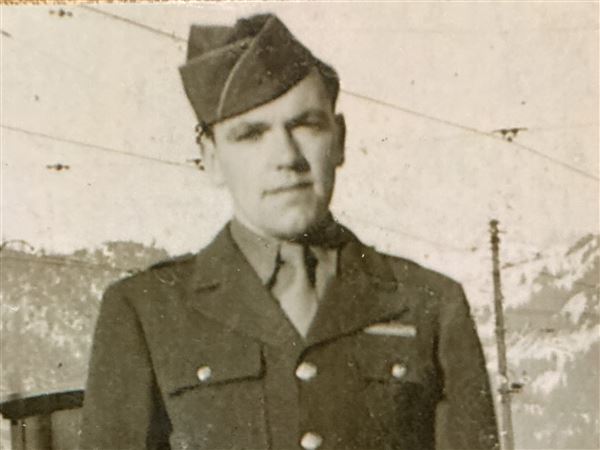Windshield wipers: Nevermore!
Here's a tip for your next trip to North Cascades National Park in Washington state: Remove your windshield wipers upon arrival. Wipers are essential in the soggy Pacific Northwest, and the ravens at North Cascades have been stealing them. No, not the Baltimore Ravens, although it's perfectly understandable why you would associate them with crime. These would be the bird ravens, who started chowing down on rubbers wipers (which are OK under the Atkins Diet) at the height of June's breeding cycle.
At first, park officials thought the pioneer raven was simply a nut case, banging away at its reflection in the glass with its anvil-like beak for hours on end, until it was bloody. So, the rangers covered the windows with dark paper. Undeterred, the raven ripped it to shreds, then disappeared. After the staff congratulated itself on a job well done, the bird reappeared, with a companion -- and more of an edge. The ravens spent the summer tearing the rubber blades from the windshield wipers of cars parked near the visitor center, reports our source, the Seattle Post-Intelligencer.
Their motivation? "The ravens could be bored, looking for a challenge -- we really don't know," Cathi Jones, the park's natural resource manager, said. "Or maybe they have a fetish with rubber."

Perhaps it was a murder of crows?
Ravens are close cousins to crows and share the genus corvus. Sociable and intelligent, crows and ravens can solve puzzles. They can choose and shape tools to retrieve food. They are able to learn, remember and use insight to solve natural and human challenges. While the larger raven prefers the wilderness, crows have increasingly become urban types, possibly because of easy access to quick food joints.
Crows are the more likely to pester humans. But both have worldwide reputations as troublemakers. A Google search yields plenty of instances of ravens and crows ripping car antennas and dive-bombing pedestrians.
John Marzluff and Tony Angell last year wrote a book "In the Company of Crows and Ravens," that traces mankind's unease with the big black birds. When war, fire or disease created carnage, crows and ravens fed on the dead. Horrified humans, troublemakers in their own right, "interpreted this predictable biological response as a supernatural sign and came to view crows and ravens as omens of bad luck," the authors write.

They have an image problem
"They are big, black and don't sing pretty songs, and they are associated with death and evilness in Western folklore. It's really bad public relations."
-- Kevin McGowan, ornithologist at Cornell University

Ravin' stories
 Gary Hatle of Everett, Wash., has gray hair, but "in a moment of extreme vanity," he dyed it dark brown, bordering on black. One day, while he was walking to work, he heard the familiar squawk of ravens and crows, but this time they were suddenly drawn to Gary and started attacking him. "They did it every time. I finally decided to take another route," he told his hometown paper, The Herald. And to get another hair color. "What is it about the color black? Once my vanity left I went back to gray, and I have no problems now."
Gary Hatle of Everett, Wash., has gray hair, but "in a moment of extreme vanity," he dyed it dark brown, bordering on black. One day, while he was walking to work, he heard the familiar squawk of ravens and crows, but this time they were suddenly drawn to Gary and started attacking him. "They did it every time. I finally decided to take another route," he told his hometown paper, The Herald. And to get another hair color. "What is it about the color black? Once my vanity left I went back to gray, and I have no problems now."
More stories from seattlepi.nwsource.com:
 "I've travelled the 280-mile length of the Grand Canyon via small wooden boat twice. River trips down the Colorado are always accompanied by a pair of ravens. I've seen them open the zipper on a backpack to look for snacks. I've seen ravens take burgers and steaks right off the grill. I've seen one take a traveler's baggie full of pills and vitamins off the top of a tent, with the traveler just feet away."
"I've travelled the 280-mile length of the Grand Canyon via small wooden boat twice. River trips down the Colorado are always accompanied by a pair of ravens. I've seen them open the zipper on a backpack to look for snacks. I've seen ravens take burgers and steaks right off the grill. I've seen one take a traveler's baggie full of pills and vitamins off the top of a tent, with the traveler just feet away."
 "I recently went to Yellowstone where the ranger gave an amazing talk about wolves and ravens. The ravens lead wolves to weak, injured animals, and the wolves share their meal with the ravens. Ravens and wolves can read each others' signals for play, and wolves allow ravens to approach wolf pups.
"I recently went to Yellowstone where the ranger gave an amazing talk about wolves and ravens. The ravens lead wolves to weak, injured animals, and the wolves share their meal with the ravens. Ravens and wolves can read each others' signals for play, and wolves allow ravens to approach wolf pups.
"She told us of a man who had a fish pond in his backyard. He couldn't figure out why his fish were disappearing, and he replenished his pond a couple of times before deciding to stake out the area. Soon enough, a raven flew down with bread crumbs in its mouth. It would sprinkle the crumbs on the water, and when the fish came up to feed ... lunch time!"
 "The place I lived had a huge amount of ravens. I told myself I won't worry too much; my cats will take care of them. Until one day I was looking out the window, and here goes my youngest cat, Bentley, running at full speed across the backyard with two large ravens flying right behind him! I had to go rescue the poor cat and bring him in. Bentley is a huge cat, about the size of a small dog. I didn't think he'd ever be afraid of birds."
"The place I lived had a huge amount of ravens. I told myself I won't worry too much; my cats will take care of them. Until one day I was looking out the window, and here goes my youngest cat, Bentley, running at full speed across the backyard with two large ravens flying right behind him! I had to go rescue the poor cat and bring him in. Bentley is a huge cat, about the size of a small dog. I didn't think he'd ever be afraid of birds."

Is it a bird, a plane? It's a poem!
The Baltimore Ravens are the only NFL team named after a poem, Edgar Allan Poe's "The Raven," published in 1845. It's about a bird who is very negative and keeps saying "Nevermore." Every schoolchild of a certain age remembers the beginning and end. In case you don't:
Once upon a midnight dreary, while I pondered weak and weary,
Over many a quaint and curious volume of forgotten lore,
While I nodded, nearly napping, suddenly there came a tapping,
As of some one gently rapping, rapping at my chamber door . . .
And my soul from out that shadow that lies floating on the floor
Shall be lifted - nevermore! Take thy beak from out my heart, and take thy form from off my door!
Quoth the raven, "Nevermore."
In early 1996, the Baltimore Sun conducted a poll to name the new football franchise that had fled Cleveland. Of the 33,000 people who voted, 21,108 -- literary types all -- selected the winner: the Baltimore Ravens. The three Raven mascots are Edgar, Allan and Poe. And may they win the Super Bowl nevermore.

Hey, get your hypoallergenic cat here

Click photo for larger image.

The obvious question: Would ravens go after hypoallergenic cats? We don't know, but we do know that the biotech firm Allerca has come out with what it claims is the world's first specially bred cat, semi-guaranteed to not cause the red eyes, sneezing and even asthma triggered by cat allergy, except in the most acute cases. Allerca says it has managed to selectively breed them by reducing a certain type of protein that triggers allergic reactions. The cost? $3,950. There is a waiting list. Allerca first started taking orders for hypoallergenic cats in 2004. The Morning File recommends waiting and buying a used hypoallergenic cat.
Allerca's Steve May told the BBC that it was a natural, if time-consuming, process. "One of 50,000 cats will have this natural gene divergence within the cat DNA," he said. "So natural divergent cats were found and then bred so there is really no modification of the gene." There would appear to be a market. In the U.S., 38 million households own a cat, and around the world an estimated 35 percent of humans suffer from allergies.

From ravens to Crowe
After the outpouring of grief for Australia's beloved adventurer, Steve Irwin, a tribute biopic was inevitable. Fellow Aussie and friend Russell Crowe is already on it. According to the Sydney Morning Herald's Web site, the Oscar-winning actor is talking with Universal about the project, in which he wants to play the maverick wildlife expert himself. The celebrated crocodile hunter was killed in a freak accident earlier this month while diving off the Great Barrier Reef, pierced by a barb from a usually peaceable stingray.
The Web site says Crowe once told Irwin he wanted to play him in a movie version of his life. A video tribute from Crowe was played at last week's public memorial service, where he said: "We've all lost a friend, we've lost a champion, and we're going to take some time to adjust to that."
First Published: September 26, 2006, 4:00 a.m.
















